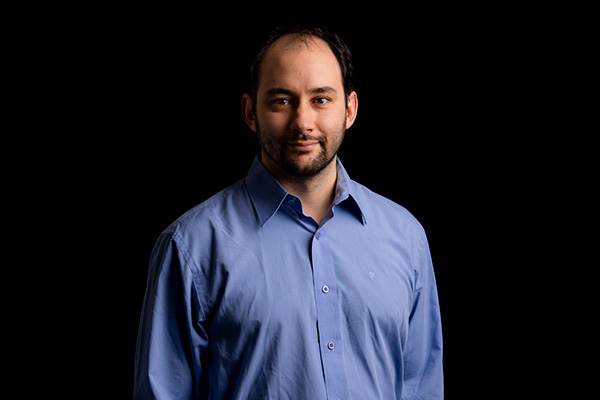Fernando Racimo
Research leader

Project title
Spatio-temporal analytical modelling for paleobiology
What is your project about?
The STAMP project will consist in reconstructing ecological dynamics in the Arctic and tundra regions of North America and Eurasia over the past 30,000 years: What was the distribution of keystone megafauna species in the late Pleistocene and Holocene landscapes, and why did it change over time? How were species impacted by climate upheavals and ecological turnovers? What are the ecological and environmental parameters that determine species resiliency or extinction in the face of change? We will tackle palaeoecological problems in which space and time are inextricably linked together, and also develop new computational tools for the analysis of spatiotemporally-tagged ancient data.
How did you become interested in your particular field of research?
I consider myself a “digital palaeontologist”, and, over the course of my career, my interest has lied in using statistical modelling and simulations as my pick and axe, to excavate the truth about past evolutionary processes in data from different fields. Paleobiological records – like fossils, ancient biomolecules and environmental DNA – have exploded in abundance in the last few decades and can be used to trace detailed changes in the Earth’s history - including changes in species distributions - as a consequence of past ecological transformations. Yet, analyses of paleobiological data rarely resort to more than purely descriptive summary statistics, missing the full spectrum of rich spatio-temporal information associated with them. I thus aim to bridge the gap between the rich datasets of paleoecology and paleogenomics with the powerful tools of spatiotemporal statistics.
What are the scientific challenges and perspectives in your project?
Methods for properly analysing data produced in large-scale fossil and ancient genomic studies are still in their infancy, particularly when it comes to linking these data with ecological processes. First, it is unclear how to treat data of disparate types. Given a site has been sampled for fossils, how much more information does the presence of sedimentary DNA from a particular species contain, relative to the presence of fossils from the same species in a nearby area or period? If we find DNA from two species co-occurring at multiple sites, what does that tell us about their patterns of cohabitation or competition? Even from a merely descriptive standpoint, few techniques exist to associate these disparate sources of data in space-time. STAMP seeks to tackle this challenge, by creating statistically sound inferences from disparate sources of paleobiological data.
What is your estimate of the impact, which your project may have to society in the long term?
Large mammals are keystone species in many ecosystems, having a strong influence on nutrient and materials cycling and vegetation specialisation, while also being highly sensitive to climate and ecological changes. Efforts to map the distributions of these species are thus essential to our understanding of how previous climate change has affected biomes in the past, and to our ability to predict how it will do so in the coming century and beyond. Additionally, deforestation, habitat destruction and climate change are all reducing the extent and health of global forests - a major carbon sink - at an alarming extent. Understanding the causes and consequences, as well as the rate and magnitude of past forest range changes is of fundamental importance to our response to these threats.
Which impact do you expect the Sapere Aude programme will have on your career as a researcher?
STAMP will allow me to create an internationally-recognized programme in spatiotemporal paleobiology, grounded in a sound statistical framework. It will produce a new conceptual paradigm for thinking about how to handle paleo-datasets and how much information can be obtained from them. It will also create a new paleo-data resource and a novel set of computational methods for analysing ancient ecological processes. Ultimately, STAMP will serve to empower the next generation of paleo-scientists with powerful tools to map the living past.
Background and personal life
In addition to a researcher, I am also an activist. Over the past couple of years, I have become heavily involved in the climate and ecological justice movement, and so – outside of my lab – you might often see me holding a megaphone while protesting on the street. I believe scientists have a particularly important role to play in calling attention to climate and ecological breakdown, as we are particularly well informed about its causes and consequences. Beyond my duties as researcher and activist, I have also recently become a father of a baby boy. In my (increasingly limited) free time, I also like to run, take care of plants, and read books on a variety of topics, including sci-fi, fantasy, paleontology, economics, political science and degrowth.
View all research leaders here
Research institution
University of Copenhagen
Research field
Evolutionary biology
City of your current residence
Malmö
High school
Escuela Argentina Modelo
